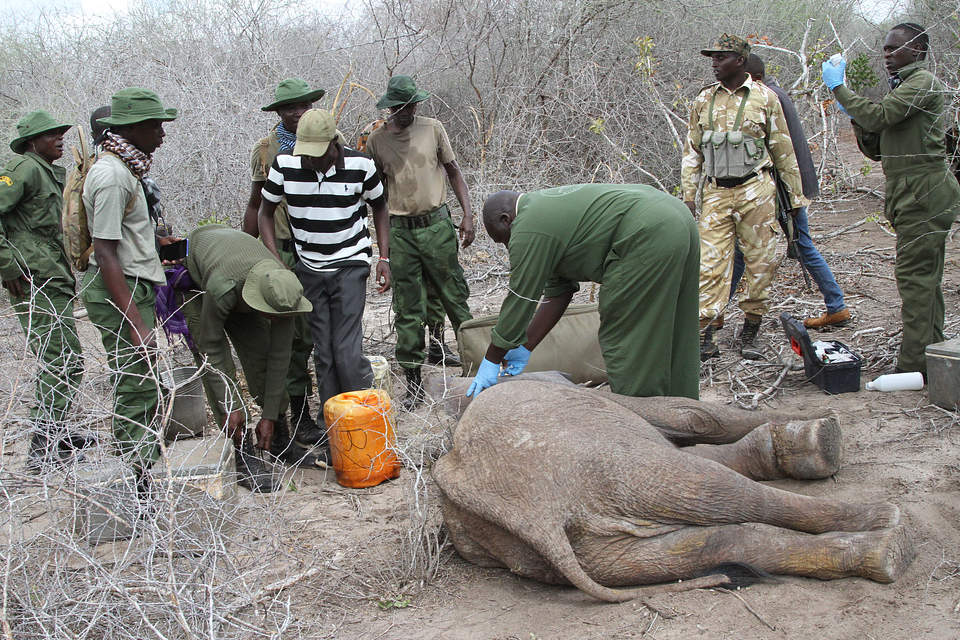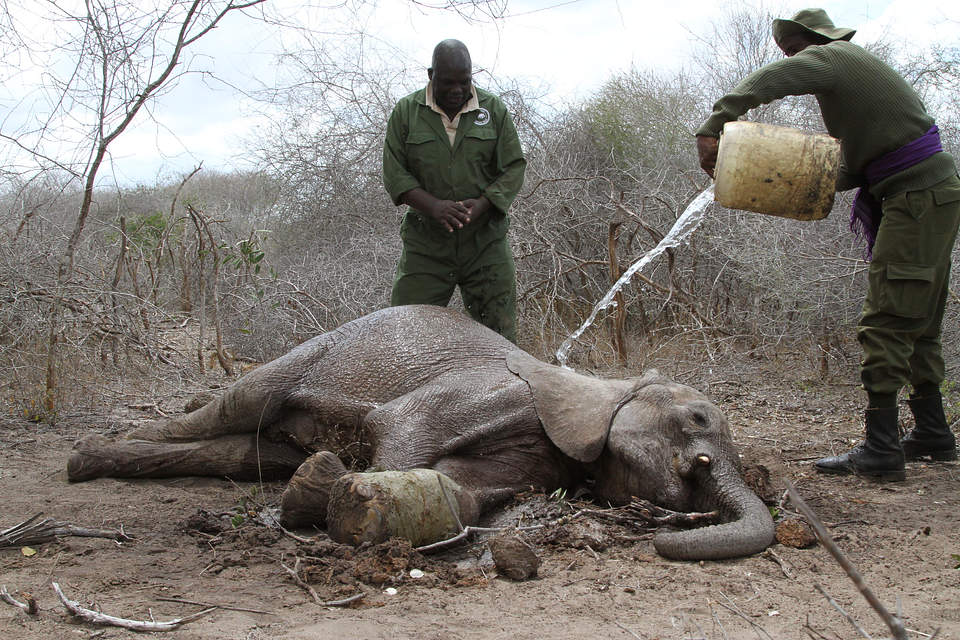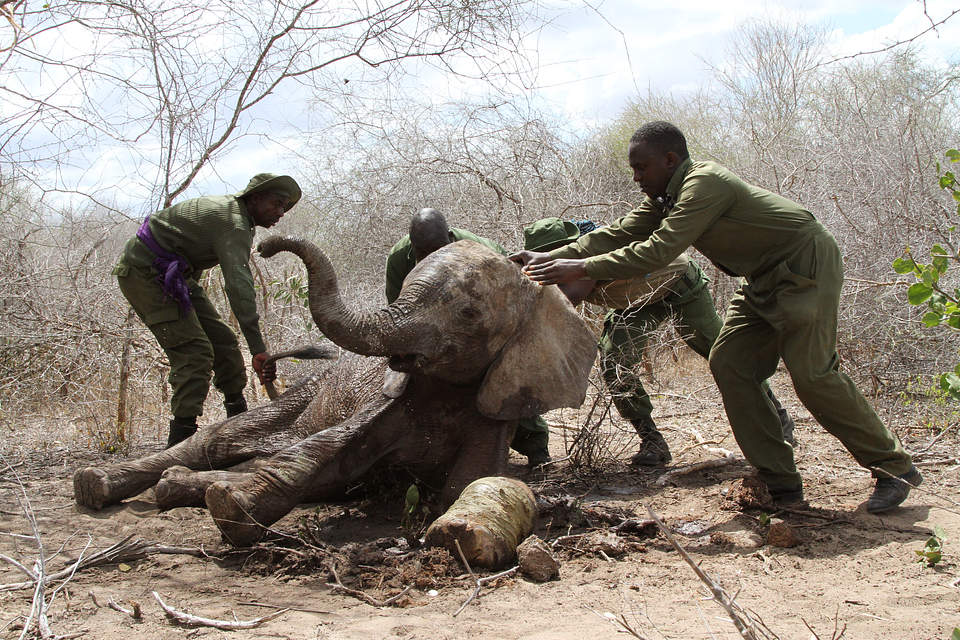A small elephant family traversed the southern reaches of the Tsavo ecosystem. At first glance, they were a perfect unit: two adult females, raising two sub-adults and two young calves, all together as nature intended. But it soon became clear that something was terribly wrong with this scene.

While the SuperCub kept eyes on the elephant family, the team made a plan
It began with a routine patrol on the morning of 14th June. SWT/KWS Dakadima and Kulalu Anti-Poaching Teams spotted the small family unit, but they quickly realised that one of the calves was in visible distress. She had a snare on her front, left ankle, hindering her mobility and causing unimaginable pain.

The calf had a snare slicing around her front ankle and a shallow arrow wound on her rump
The team leader reported their sighting to our Kaluku Field Headquarters, which organised an urgent treatment. Given the dense bush and the logistics involved in separating the calf from the herd, this would be an aerial operation. While our SuperCub flew directly to the scene to locate the family, our helicopter waited for Dr Limo and the SWT/KWS Tsavo Mobile Veterinary Unit to arrive.

The thin wire snare had embedded deep into the skin
After scanning all the elephant herds in the area, our pilots located the family in question. While the SuperCub kept eyes on the elephants, the helicopter touched down so Dr Limo could load his dart gun and make a plan of operations. With the plan established, the helicopter took flight once more and gently shepherded the calf away from her family. Dr Limo landed the dart from the air and the calf quickly succumbed to the anaesthetic. As soon as she was down, the teams converged by her side.

It was all hands on deck to treat this three-year-old female
Tragically, this calf was a victim of human malice twofold: Not only did she have a snare encircling her front ankle, but she also had what appeared to be a glancing arrow wound on her rump. Dr Limo reversed the anaesthetic and the teams stepped in to hold down the calf, keeping her as cool, calm, and comfortable as possible.

After removing the snare, the team packed the wound with green clay and administered all the necessary medications
The snare was only a thin wire, but its effect could have been catastrophic. Already, it had become embedded deep into the skin, creating a grisly wound around her entire ankle. Painstakingly, the team cut away the snare and cleaned the area. After packing it with green clay and applying antiseptic spray, they attended to the arrow wound. At last, the calf was ready to rejoin her family.

It was important to keep the calf relaxed and cool throughout treatment
Throughout the treatment, the SuperCub patrolled overhead and kept eyes on the family. With so many elephants in the area, aerial surveillance was vital to ensure the safety of our ground teams and facilitate an easy reunion after treatment. Because of this surveillance, we were able to usher the calf towards her family as soon as she was back on her. They were initially cautious when they approached her, but the moment recognition set in, they swept their beloved baby back into their orbit.

With a final helping hand, the little patient was back on her feet
Given the severity of the snare wound, teams will endeavour to monitor the patient’s recovery in case she needs additional care. Meanwhile, she is in the best place she can possibly be, healing amongst her family.

The teams guided the calf over to her herd, who happily embraced her back into the fold
At three years old, this calf should have her whole life ahead of her. A single loop of wire threatened all of that. We are incredibly grateful to the diligent observation of our rangers and seamless teamwork that gave this young elephant hope for a better tomorrow.
